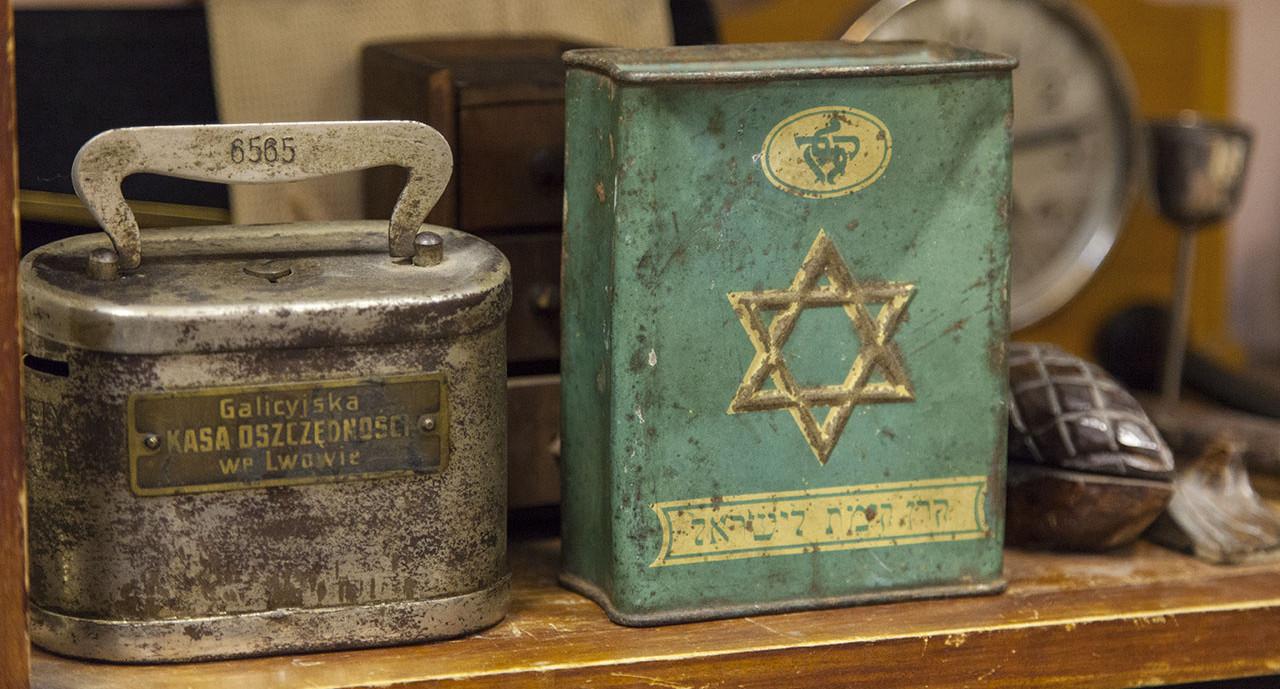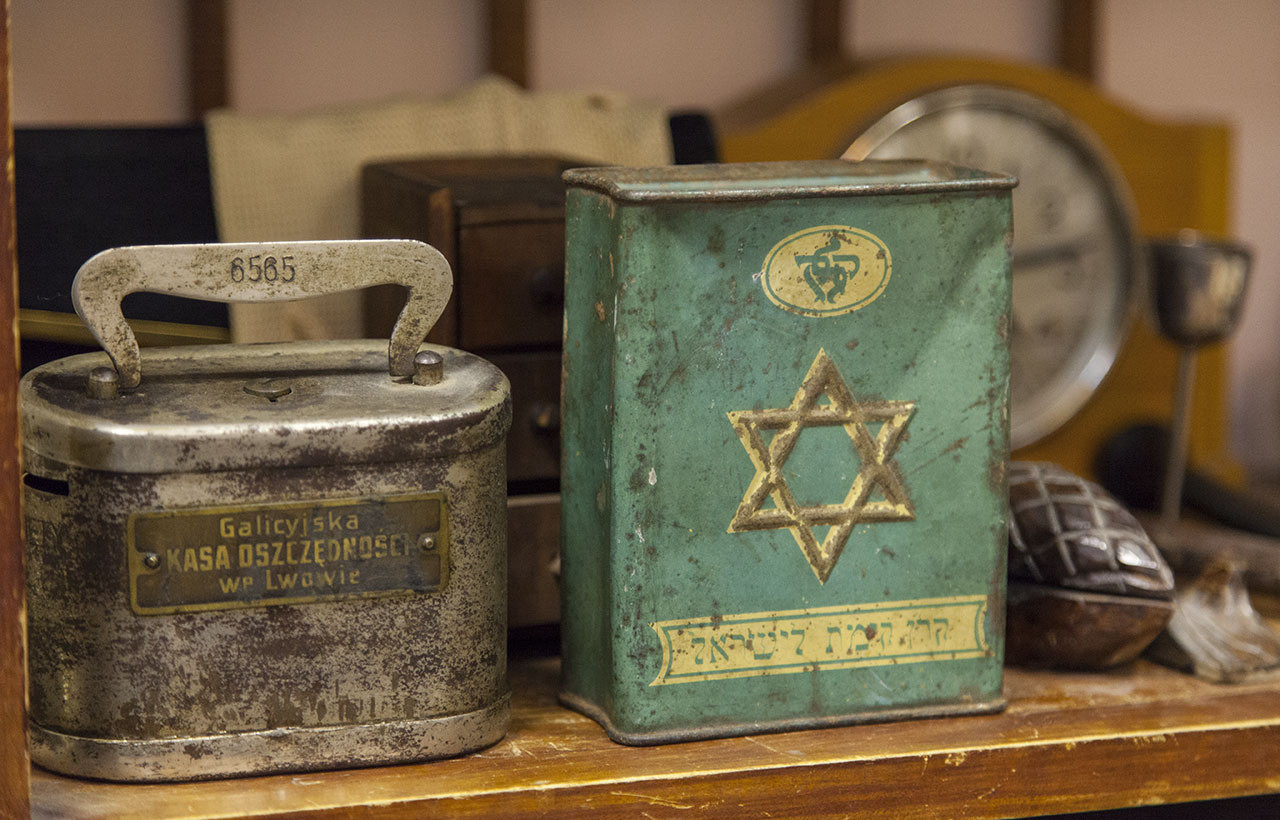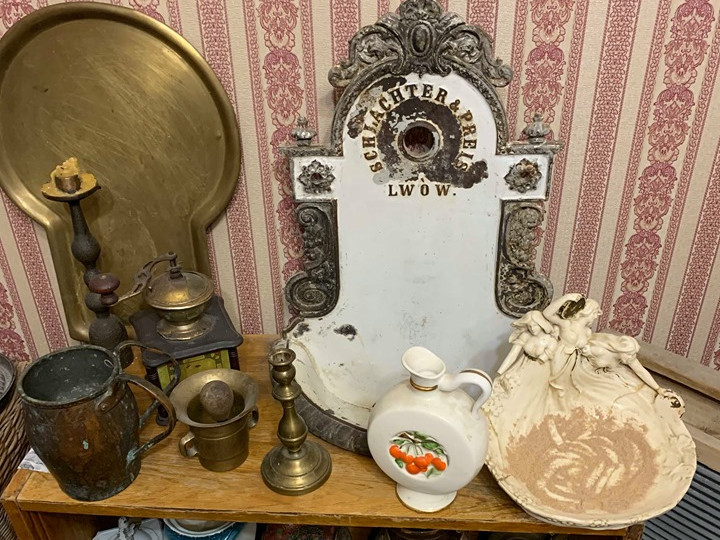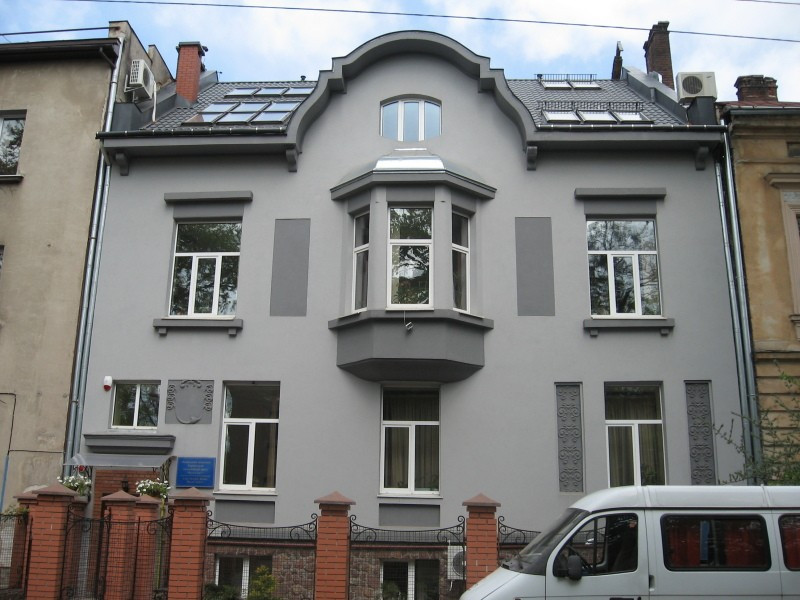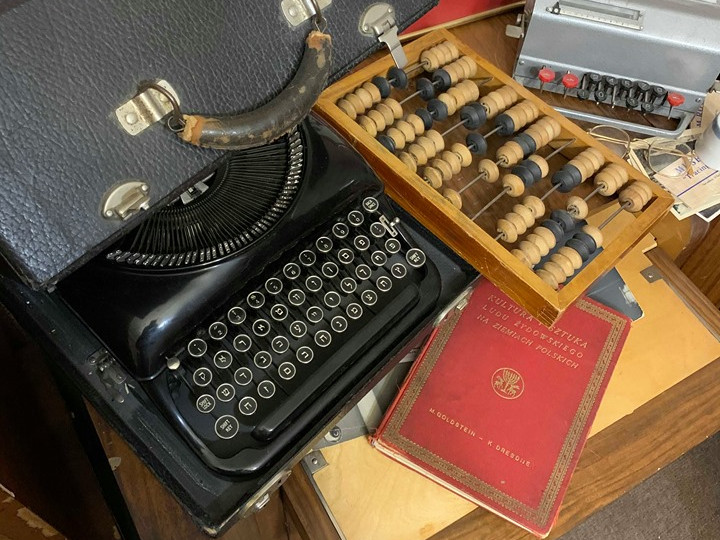"Following Galician Hebrews" is a good name for a tourist route to destinations that are directly or indirectly related to the Jewish heritage. But in Lviv with this name is a museum of Jewish culture and history of Lviv Jews, in particular, it presents the following exhibitions: "Department of Victims of the NKVD and Nazism", "History of Lviv synagogues and rabbis", "Bankers and artisans of the prewar period", "Jewish hospitals ", etc. The museum operates under the Hesed-Arieh All-Ukrainian Jewish Charitable Foundation.
In the museum, you will learn about everyday life, about the cultural differences of Jews, about Lviv and not only Lviv persons and events. It is important to study and research one's own culture, but it is no less important to know other cultures, it is a manifestation of cultural tolerance and respect for others. In this article, we will open for you the household items of Jews, unknown to people from other cultures.
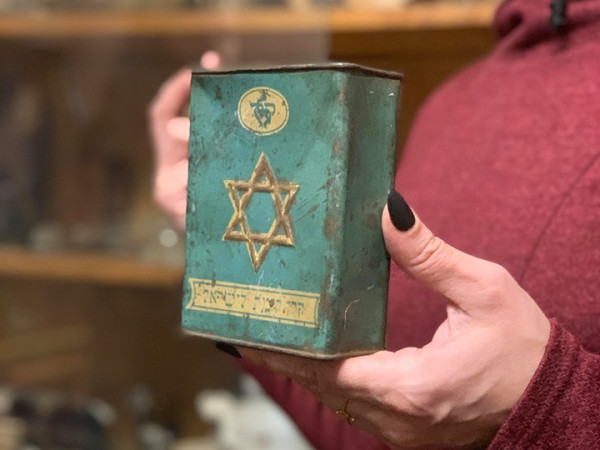
Tzedakah
Many people refer to this box as kitchen utensils, but for Jews it has a special purpose. This box was in almost every Jewish family, where money was collected to build the future independent of the Jews - Israel. The funds collected over a period then were taken to the appropriate center, from which they were later sent to the territory of modern Israel. These funds were used to buy land belonging to Palestine, on which kibbutzim were eventually created, or independent social and economic structures in Israel, some of which are still preserved.
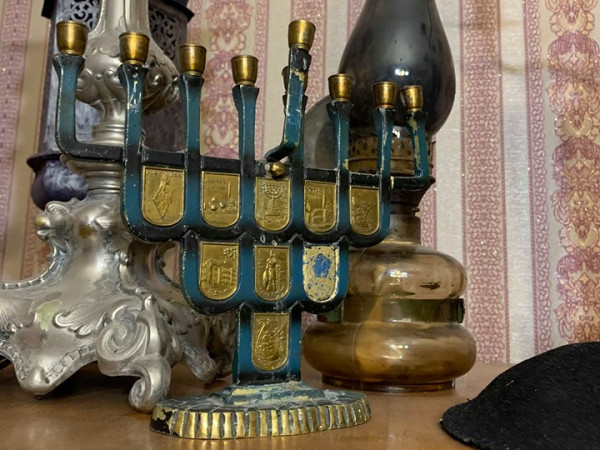
Hanukkah lamp
Hanukkah candlestick (reference: Hanukkah is a Jewish miracle of the miracle, victory in the war between holiness and uncleanness. This is a Jewish eight-day winter holiday), in which candles are lit for 8 days, adding one daily, it is interesting that at first oil was poured into the candlestick. It is important that they are installed from right to left, and lit from left to right. Light them in the early evening shortly before sunset, the candles should burn for at least 30 minutes after dark. You can't do household chores, etc. under the light of Hanukkah candles.
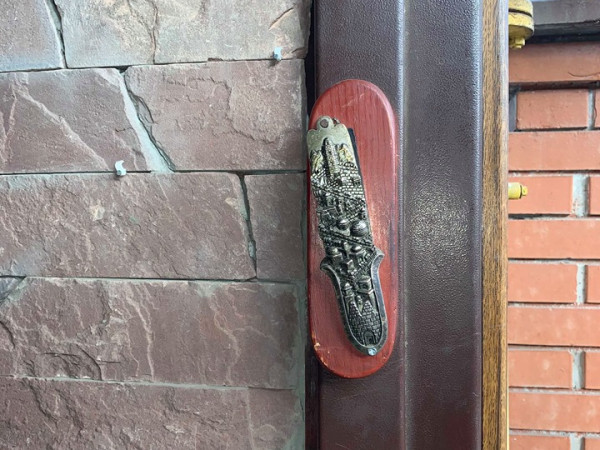
Mezuzah
A scroll of parchment with a fragment of the text of the prayer "Shema Yisrael" ("Hear, O Israe"),which is enclosed in a special case and fixed on the outside of the door near or on the doorpost. Mezuzah production has become a real art over the centuries. Cases are often made with exquisite decoration of a variety of materials: silver and other precious metals, wood, stone, tin, polymer clay.
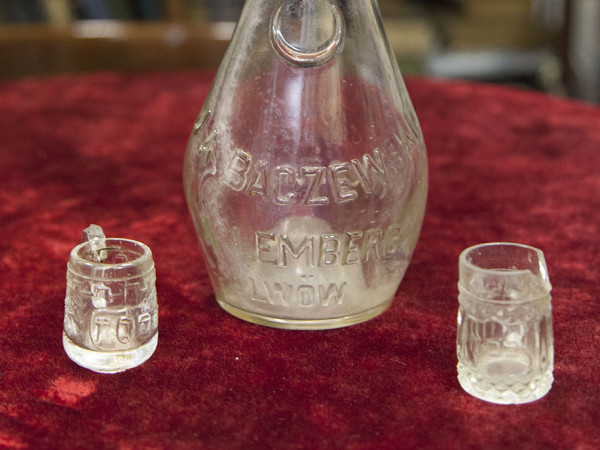
Glasses of the Bachevsky factory
Another exhibit present in the collection is a decanter with glasses. As it turned out, during the Feast of Passover, or Pesach (reference: the central Jewish holiday in memory of Exodus of the Children of Israel from Egyptian slavery, when God "passed over" the houses of the Israelites during the last of the ten plagues), water was poured there and a few drops of wine were added for the children to join the Passover thus teaching children the Jewish traditions and religion.
A machine for making matzah (matzo, matza) has been preserved - the Jews have unleavened bread made of wheat flour, which is used during Passover; antique house and kitchen utensils are separated for meat and dairy dishes, as well as special utensils for Passover, and preserved many other equally interesting things. An interesting household item is a frying pan used to fry meat and separate fat from it, which is forbidden for Jews to eat.

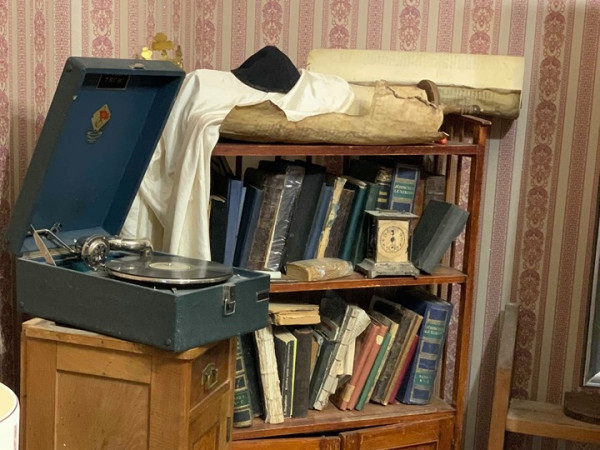
A unique object is a preserved Torah scroll (Sefer Torah) a handwritten parchment scroll with the text of the Pentateuch of Moses (Torah), which is used for weekly reading in the synagogue and is considered the main sacred object in Judaism. We can only imagine how difficult it was for those who wrote this manuscript, because if a mistake was made in the text, the whole scroll lost its sacred meaning and the scroll was burned.
Objects associated with real historical figures include a lamp owned by Professor Jakub Honigsman, a Ukrainian economist of Jewish descent, a doctor of economics and a researcher of the history of Eastern Galicia and the Jewish community in Western Ukraine. Confidently to say that many important works were created under the light of this lamp.
There is no exact reason why the museum is located in this building; however, it is believed that a Jewish family once lived in the museum building, who tragically died in a ghetto or concentration camp. If you are interested in discovering Jewish culture or learning more about the history of Lviv Jews, the museum will be the best place. You can also use the routes prepared by the Tourist Information Center: " Cultural and social life of the Jews of Lviv in the XIX - 1st half XX century", as well as "Lviv Jewish districts. The Way of changes and reforms".
